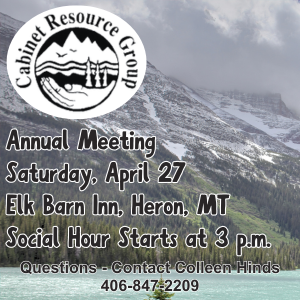Remember When?
April 18, 2019
40 YEARS AGO • APRIL 12, 1979
LAOS FAMILY MAKING
NEW LIFE IN FALLS
One must review the history of the Hmong people before understanding their arrival and struggle in our country. First, who are the Hmong?
According to Tou-FuVang, a member of the executive committee for the Assn. of Hmong, “During the conflict in Indochina, the Hmong provided the most ferocious defense of Laos against the communists. They also became the backbone of the loyal allies of the U.S., and made great sacrifices in furthering American military policies in Indochina.”
The Hmong are a people whose name means freedom. “They are a people with close family ties and a belief in total commitment against communism,” says Principal Walt Clark, who had Phong Vang, a refugee residing in his home.
This is evident in meeting the Hmong people of the Thompson Falls Community. Teng Vang, who currently works at the Stobie Shopping Center fled from Laos with his wife, children, mother, four sisters and a brother to reestablish life in America. He had a brother and a father who were majors in the army.
“Thousands of people a month die there,” says Teng.
He studied two years at a university in Laos, then one day said that he was going to visit his mother and left for Thailand. He describes the refugee camps in Thailand as “dirty and difficult to live on one pound of rice and a chicken to last two days.”
Similarly, Ti Vang who was graduated from Thompson Falls High School, made his way across the waters. He came with his brother Lo Thao, a captain in the army, his wife and two children. February was the expected date to meet their brother, Vang Thao in Missoula, but his journey was postponed.
Relocation works on a priority basis. Teng points out that there are three priority categories: the first for those who worked with the Americans, the second are those who have relations in the U.S., and the third are those who served in the army.
According to a July 1978 study, approximately 14,000 Indo-Chinese refugees in the U.S. are from Laos, a country surrounded by Burma, China, Vietnam, Thailand and Cambodia. About 82,425 Laotians, outnumbering Cambodians and Vietnamese await relocation.
Because of their avid participation in the fight for freedom the Hmong seem to be among the most persecuted groups in Laos. They are noted throughout history as being leaders of both factions during wartime, the Pathent Lao (communist) and the Royal Lao government.
The official cease fire agreement between the Pathet Lao and the Royal Lao government was signed in February 1972. One year later a coalition government was formed allowing the advancement of the Pathet Lao troops. By April 1975, parallel with events in Cambodia and Vietnam, the Pathet Lao consolidated their military and political powers and the Royal Lao Government collapsed.
Living day to day, not knowing who will die or disintegrate or when, has made life unbearably insecure and escape to Thailand the only alternative for the Hmong people. Thousands of people have been displaced, forfeiting their homeland and in many cases, their friends and families for liberty. Hmong refugees have been taken by France, Australia, Canada and the U.S., the latter being their first choice.
Volunteer agencies have sponsored the refugees. However, coming to a new country means learning different economic and social systems, a new language, and fitting into a foreign culture. Once settled, the refugees are left on their own to adjust to things we take for granted, such things as telephones, traffic laws, and terms like “down” jacket, which inspire the question, “If that’s a down jacket, what’s an up jacket?”




Reader Comments(0)